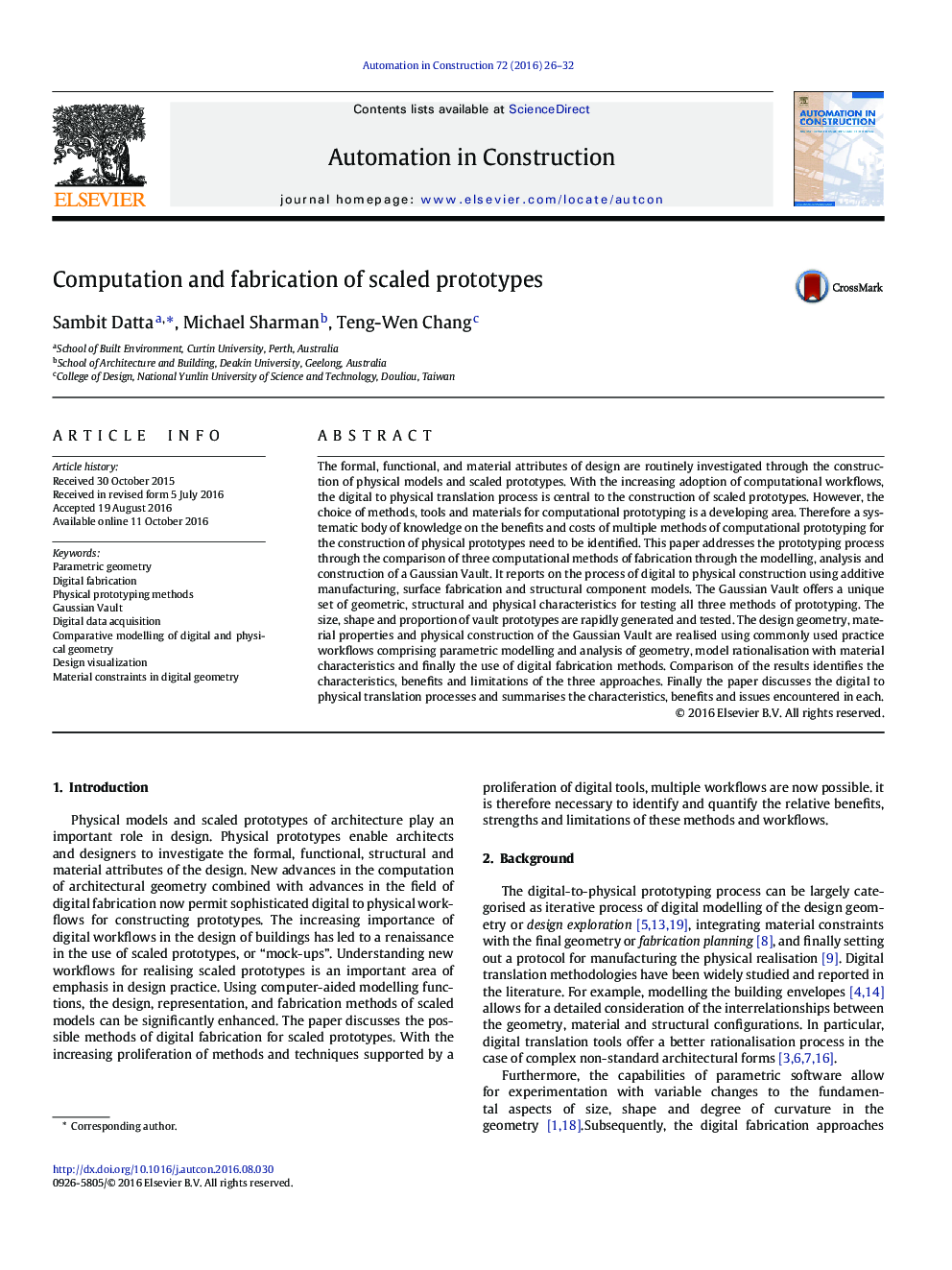| Article ID | Journal | Published Year | Pages | File Type |
|---|---|---|---|---|
| 4911391 | Automation in Construction | 2016 | 7 Pages |
Abstract
The formal, functional, and material attributes of design are routinely investigated through the construction of physical models and scaled prototypes. With the increasing adoption of computational workflows, the digital to physical translation process is central to the construction of scaled prototypes. However, the choice of methods, tools and materials for computational prototyping is a developing area. Therefore a systematic body of knowledge on the benefits and costs of multiple methods of computational prototyping for the construction of physical prototypes need to be identified. This paper addresses the prototyping process through the comparison of three computational methods of fabrication through the modelling, analysis and construction of a Gaussian Vault. It reports on the process of digital to physical construction using additive manufacturing, surface fabrication and structural component models. The Gaussian Vault offers a unique set of geometric, structural and physical characteristics for testing all three methods of prototyping. The size, shape and proportion of vault prototypes are rapidly generated and tested. The design geometry, material properties and physical construction of the Gaussian Vault are realised using commonly used practice workflows comprising parametric modelling and analysis of geometry, model rationalisation with material characteristics and finally the use of digital fabrication methods. Comparison of the results identifies the characteristics, benefits and limitations of the three approaches. Finally the paper discusses the digital to physical translation processes and summarises the characteristics, benefits and issues encountered in each.
Related Topics
Physical Sciences and Engineering
Engineering
Civil and Structural Engineering
Authors
Sambit Datta, Michael Sharman, Teng-Wen Chang,
